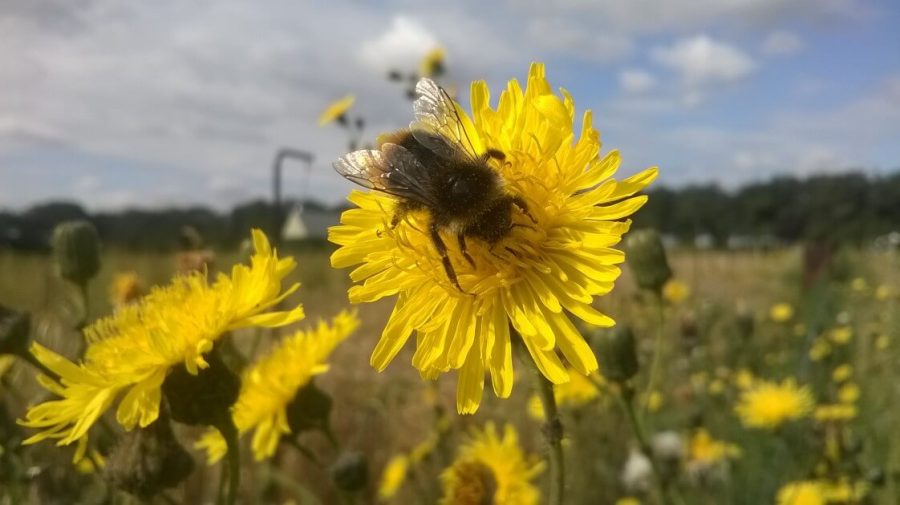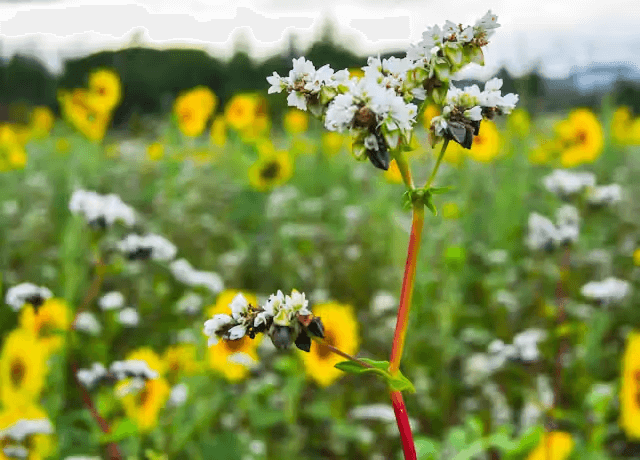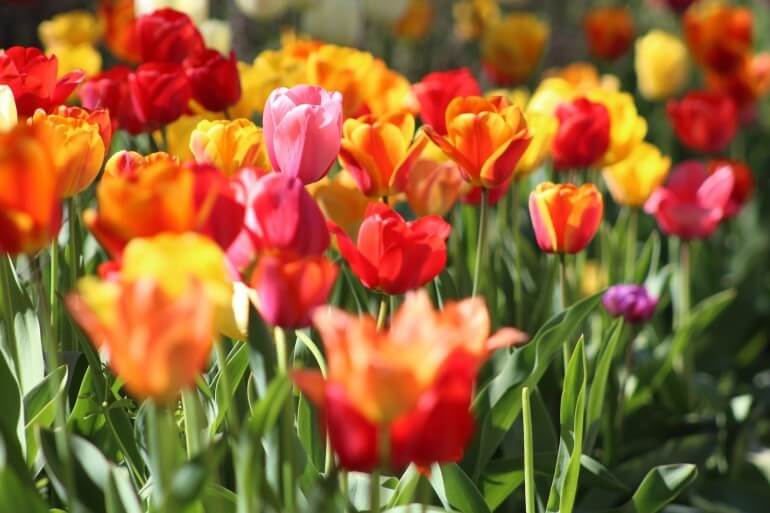The flower industry, a global enterprise worth billions, is not immune to the effects of climate change. As temperatures rise, weather patterns shift, and ecosystems transform, the production, distribution, and retail of flowers are increasingly under pressure. This article explores the various ways in which climate change is impacting the flower industry, with a focus on its relevance to the Dubai and UAE region. It will delve into the challenges faced by growers, suppliers, and consumers, and provide insights into how the industry is adapting to these new realities.
The Growing Challenge of Temperature Increases
One of the most direct impacts of climate change on the flower industry is the increase in global temperatures. Many flowers thrive within specific temperature ranges, and even small deviations can affect their growth cycles, blooming periods, and overall health. As temperatures rise, traditional growing regions are experiencing shifts in their ability to produce flowers at the quality and quantity that consumers demand.
Global Temperature Trends
According to the Intergovernmental Panel on Climate Change (IPCC), global temperatures have risen by approximately 1.1°C since the late 19th century, with significant consequences for agriculture, including floriculture. In regions that have historically produced specific types of flowers, such as roses or tulips, rising temperatures are shortening blooming periods and leading to earlier harvests, which can disrupt the supply chain and affect market prices.
Impact on Flower Quality
Higher temperatures can lead to heat stress in plants, which negatively affects the size, color, and lifespan of flowers. For instance, roses grown in excessively warm conditions may have fewer petals and less vibrant colors, making them less desirable to consumers. As a result, growers must either adapt their practices or shift production to cooler regions, both of which can increase costs and reduce profitability.

Changes in Precipitation Patterns
Climate change is also altering precipitation patterns, leading to more frequent and severe droughts in some areas and increased rainfall in others. These changes are having profound effects on the availability of water for flower cultivation, which is particularly challenging in regions where water resources are already scarce, such as the Middle East.
Drought and Water Scarcity
Many flowers require consistent watering to maintain their health and appearance. In regions facing prolonged droughts, such as parts of Africa and the Middle East, water scarcity is becoming a critical issue for the flower industry. Growers are forced to invest in more efficient irrigation systems or reduce the scale of their operations, which can limit the availability of certain types of flowers in the market.
Excessive Rainfall and Flooding
Conversely, regions experiencing increased rainfall may face issues related to waterlogged soil, which can lead to root rot and other diseases in flowers. This is particularly problematic for delicate species that require well-drained soil to thrive. Flooding can also damage infrastructure and disrupt transportation, further complicating the supply chain.
The Effects on Flower Supply Chains
The global nature of the flower industry means that climate change impacts are felt along the entire supply chain, from growers to retailers. As traditional growing regions become less viable due to climate change, the industry is being forced to adapt by finding new locations for flower cultivation and implementing more resilient practices.
Shifts in Growing Regions
As climate conditions become less favorable in traditional flower-growing regions, there is a trend towards moving production to areas with more stable climates. However, this shift is not without challenges, as new growing regions may lack the infrastructure, labor force, or expertise needed to produce flowers at the same scale and quality as established regions.
Adapting to Climate Change: Innovations and Strategies
In response to the challenges posed by climate change, the flower industry is exploring a range of innovations and strategies to adapt. These efforts are aimed at mitigating the effects of climate change while ensuring that the industry can continue to meet consumer demand.
Sustainable Growing Practices
One of the most significant trends in the flower industry is the adoption of sustainable growing practices. These include the use of renewable energy sources, such as solar power, to reduce the carbon footprint of flower production. Additionally, growers are increasingly implementing water-saving technologies, such as drip irrigation, to conserve water in regions affected by drought.
Climate-Resilient Varieties
Breeding and cultivating climate-resilient flower varieties is another strategy being employed to adapt to changing conditions. These varieties are designed to withstand higher temperatures, water scarcity, and other environmental stresses associated with climate change. For example, researchers are developing drought-tolerant roses and heat-resistant lilies that can thrive in warmer climates.
Indoor and Controlled Environment Agriculture (CEA)
As outdoor growing conditions become more unpredictable, there is a growing interest in indoor and controlled environment agriculture. By cultivating flowers in greenhouses or other controlled environments, growers can regulate temperature, humidity, and light levels to create optimal conditions for flower production, regardless of external weather conditions. This approach is particularly relevant in regions like Dubai, where extreme temperatures and water scarcity pose significant challenges to traditional agriculture.

The Economic and Social Impacts
The economic and social impacts of climate change on the flower industry are significant and far-reaching. As the industry adapts to new challenges, there are both positive and negative consequences for growers, workers, and consumers.
Rising Costs
The increased costs associated with adapting to climate change, such as investing in new technologies or relocating production, are likely to be passed on to consumers. This could lead to higher prices for flowers, particularly for species that are more difficult to cultivate under changing conditions. For growers, these rising costs may also reduce profit margins, making it more difficult for smaller operations to compete in the market.
Impact on Labor
The flower industry is labor-intensive, and changes in growing conditions can have significant implications for workers. For example, as production shifts to new regions, there may be a need for retraining or relocating workers, which can be disruptive. Additionally, the increased use of automation and technology in response to climate change could reduce the demand for manual labor, leading to job losses in some areas.
Consumer Demand
Climate change may also influence consumer demand for flowers. As awareness of environmental issues grows, consumers are increasingly seeking out sustainable and ethically sourced products. This shift in demand could drive further changes in the industry, as growers and retailers adapt to meet consumer expectations. In the UAE, where sustainability is a growing priority, businesses like Floberry are responding to this trend by offering eco-friendly floral options that appeal to environmentally conscious consumers.
The Role of Policy and Regulation
Government policy and regulation play a crucial role in shaping the flower industry’s response to climate change. In many countries, including the UAE, governments are implementing measures to reduce carbon emissions, promote sustainable agriculture, and support industries in adapting to climate change.
Regulatory Frameworks
In the UAE, initiatives such as the UAE Green Agenda 2015-2030 and the National Climate Change Plan aim to promote sustainable development and reduce the country’s environmental impact. These policies encourage the adoption of sustainable practices in various sectors, including agriculture and floriculture. By aligning with these regulations, the flower industry can contribute to national efforts to combat climate change while also benefiting from government support.
Incentives for Sustainability
Many governments are also offering incentives for businesses that adopt sustainable practices, such as tax breaks, grants, or access to funding for research and development. These incentives can help offset the costs of transitioning to more sustainable production methods, making it easier for flower growers to adapt to climate change. In the UAE, the government’s focus on innovation and sustainability provides opportunities for the flower industry to develop new technologies and practices that can enhance resilience to climate change.

The Future of the Flower Industry in a Changing Climate
As the effects of climate change become more pronounced, the flower industry will need to continue adapting to ensure its long-term viability. This will require ongoing innovation, investment in sustainable practices, and collaboration across the industry to address the challenges posed by a changing environment.
Continued Innovation
The future of the flower industry will likely be shaped by continued innovation in areas such as climate-resilient flower varieties, sustainable growing methods, and controlled environment agriculture. These innovations will be essential for maintaining the supply of high-quality flowers in the face of increasingly challenging growing conditions.
Consumer Awareness
As consumers become more aware of the environmental impacts of their purchasing decisions, the demand for sustainably sourced and climate-resilient flowers is likely to grow. The industry’s ability to meet this demand will be critical to its success in a changing climate. In the UAE, where sustainability is increasingly a priority, businesses like Floberry are well-positioned to lead the way in offering eco-friendly floral products that align with consumer values.
Conclusion
Climate change poses significant challenges to the flower industry, from rising temperatures and shifting precipitation patterns to disruptions in supply chains and increased costs. However, by embracing innovation, sustainable practices, and global collaboration, the industry can adapt to these challenges and continue to thrive in a changing world. For businesses in Dubai and the UAE, where environmental concerns are becoming increasingly important, the ability to offer climate-resilient and sustainable floral products will be key to meeting the needs of consumers and contributing to broader efforts to address climate change.

Skateboarder, ninja, band member, International Swiss style practitioner and proud pixelpusher. Acting at the crossroads of modernism and intellectual purity to develop visual solutions that inform and persuade. I’m fueled by craft beer, hip-hop and tortilla chips.



